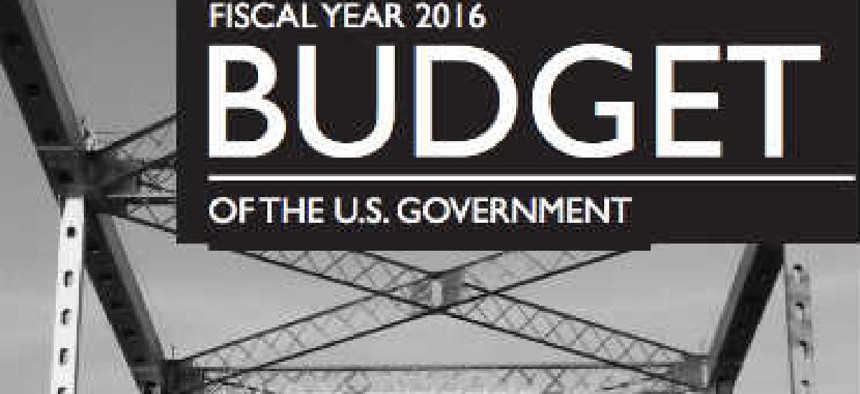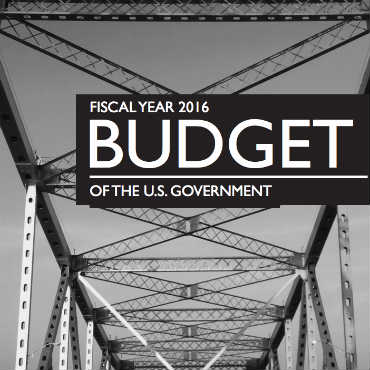President's spending plan shines spotlight on digital services

Overall IT spending is tabbed at $86.4 billion, with much of the increase driven by a hike in cybersecurity funding.

President Barack Obama's $4 trillion fiscal 2016 budget proposal is a political document with a mix of tax hikes and increased spending that isn't likely to get much traction in the Republican-controlled Congress. But the release of a budget is also an opportunity for the administration to expand its focus on digital service delivery and reward civilian feds and military service members with a 1.3 percent pay hike.
The Obama budget also looks to roll back the regime of automatic cuts known as sequestration that has hit discretionary federal spending under the Budget Control Act. The budget includes $605 billion in defense spending and $563 billion in non-defense spending. The administration's negotiating tactic is to link an end to defense sequestration, which has bipartisan support among leaders in Congress, with an end to the automatic cuts on the civilian side, a cause advanced by Democrats.
There is also a fair amount of federal IT and tech in the budget that advances some of the reforms and initiatives that found bipartisan support in legislation on acquisition reform and cybersecurity at the end of the 113th Congress.
Winners and losers
The budget favors agencies hit hardest by sequestration with proposed upticks in spending. The Department of Housing and Urban Development gets a 17 percent bump and the Department of State gets 15 percent, but most agencies come in for increases of at least a few percent.
The Department of Commerce is in line for $1.1 billion in new spending authority, an 11 percent increase, but $400 million of that is for the Census Bureau. Veterans Affairs is budgeted at $70.2 billion, a 7.9 percent increase, which includes funding for a planned reorganization designed to give vets more streamlined points of contact for accessing agency services, including a one-stop digital hub. The IRS budget, cut in the last round of appropriations, would get an increase that includes investments in technology to support new online filing and payment options.
IT breakout
Overall IT spending is tabbed at $86.4 billion. That breaks out to $37.3 billion for defense IT and $49 billion for non-defense. An increase in cybersecurity spending is driving the increase, according to acting federal CIO Lisa Schlosser.
The administration budge would also give agencies some breathing room for spending on new technology to improve service delivery. The State Department is modernizing its systems to support visa and passport processing, for example. The Department of Labor is ramping up its infrastructure to do a better job executing on its open data obligations. The Obama administration is putting a premium on evidence-based, data-driven analysis to make program decisions as part of its second-term management agenda, and agencies are modernizing systems to accommodate this new focus.
Digital services growth
The budget taps $105 million to expand the U.S. Digital Service, the tech services group that was established out of the effort to revive HealthCare.gov after its glitchy launch. Headed by Google veteran Mikey Dickerson, the USDS is scaling up to operate across every CFO Act agency except the Department of Defense. The funding request would support about 500 USDS employees across government.
Agencies have been responsive to the USDS in its startup phase, Dickerson told reporters on a conference call. He said that at launch the two challenges would be finding demand for digital services teams inside agencies and tapping private-sector technologists to work for the government.
According to Dickerson, "virtually every agency that we talk to is very interested in the kinds of people we are able to bring in to help them out." He added that agencies "that have money in a program ... that they can dedicate to this purpose are welcome and encouraged to get a head start."
Cybersecurity spending
The 2016 budget has $14 billion in cybersecurity spending, about a 10 percent increase over 2015 funding. The majority of the cyber funding goes to Department of Defense, Schlosser said in a Feb. 2 briefing.
In addition to military cyber programs, some of the high-priority strategic areas include expanding federal network security, research and development, workforce programs, and outreach to the private sector. The Department of Homeland Security budget includes $480 million for federal network security, including a detection system, dubbed Einstein 3, that analyzes and deflects potentially risky inbound traffic to federal networks. Another $102.6 million goes to the continuous diagnostics and mitigation program at DHS, an initiative intended to gives agencies access to an array of commercial tools for detecting and mitigating cyber vulnerabilities.
Acquisition reform
The White House is planning to pursue legislation that would make it easier for start-ups and small businesses to break into the federal marketplace.
The budget proposes raising the simplified acquisition threshold from $150,000 to $500,000 "to broaden the range of purchases including IT purchases that can be accomplished with minimal complexity." The administration also is seeking new pilot authority to set aside work for small and innovative companies on projects where access to cutting edge technology and creative solutions is most needed.
During 2015, the White House said it would work to develop IT acquisition training for the federal IT acquisition workforce, based on the principles and techniques provided in the government's Digital Services Playbook and TechFAR. In 2016, the White House said, it would begin pushing training sessions out to agency personnel, resulting in agencies throughout government with personnel trained in innovative acquisition practices.
Intelligence tech
The top-line National Intelligence Programs are budgeted at $53.9 billion in discretionary spending. The budget accounts for the 17 elements of the intelligence community are classified, and barring any repeat of the Edward Snowden leaks, there won't be much detail on how the money is spent.
But the budget would expand the shared use of cloud-based IT capabilities, according to a summary. The vision of a secure, distributed, cross-agency intel network -- the IC Information Technology Enterprise (ICITE) program launched in 2012 -- is being expanded through spending across intelligence agencies. "The IC is working to ensure that intelligence information flows anywhere and anytime it is required by any authorized user, from the President to our troops on the ground," according to budget documents.
Defense IT
There isn't much detail on the military's $37.3 billion IT budget, but the Pentagon did preview some of its technology priorities.
The budget request seeks $12.3 billion toward science and technology, on par with the $12.2 billion appropriated in fiscal 2015. The request includes funding the nascent Defense Innovation Initiative, which outgoing Defense Secretary Chuck Hagel established to try to help foster breakthroughs in fields like robotics, big data and 3D printing. The DOD S&T request would also marginally increase the Defense Advanced Research Projects Agency's budget from the $2.9 billion appropriated last fiscal year to $3 billion in fiscal 2016.
The Pentagon continues to advance its cyber capabilities through new forces and new technologies, to conduct operations in cyberspace and counter attacks against the U.S. The Pentagon is still trying to shrink is bureaucracy, by reducing management costs, and lowering acquisition costs through its Better Buying Power initiative.
Health IT
A $215 million Precision Medicine effort puts government dollars behind the effort to use rapidly expanding knowledge of genetics to customize the treatment of certain diseases, including cancers. The effort includes funding to establish standards for tagging, storing, and sharing genetic information inside electronic health records systems. The budget also would continue support for work of the Office of the National Coordinator for Health IT to develop industry and stakeholders standards to improve interoperability among electronic health records systems.





